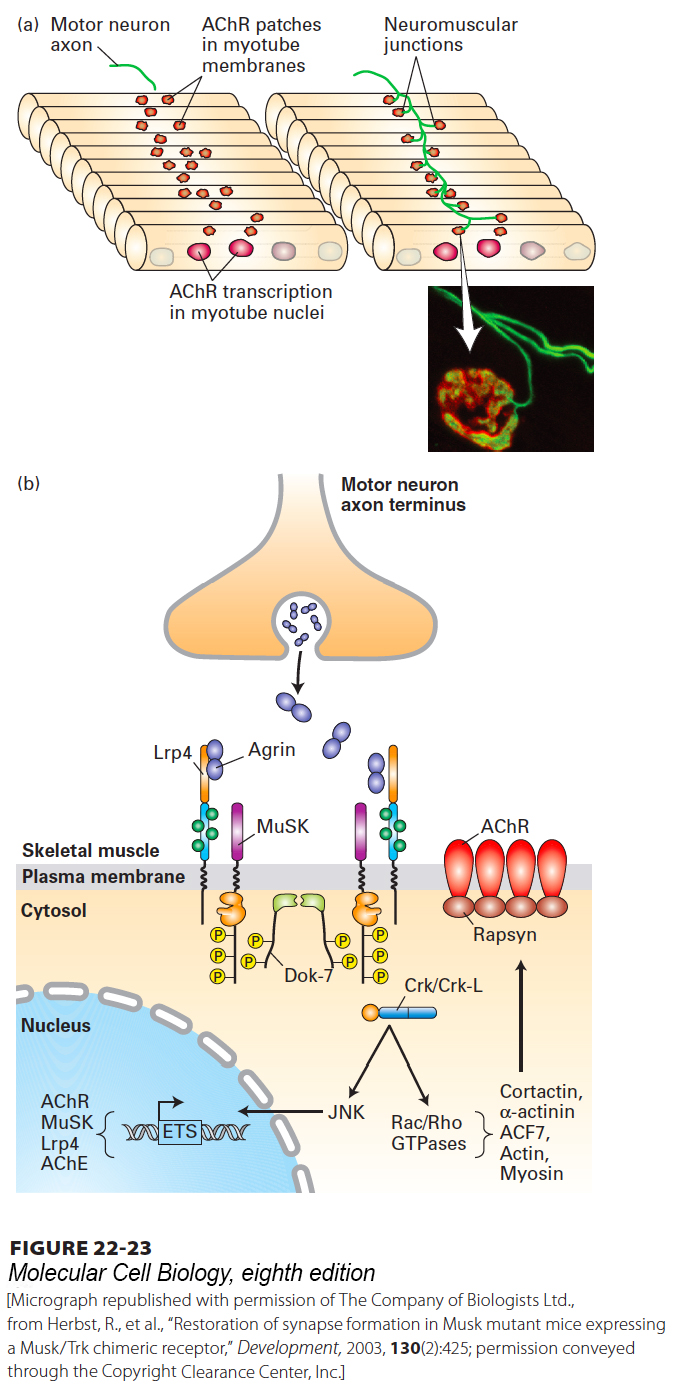
FIGURE 22- 23 Formation of the neuromuscular junction. (a) Motor neuron- myotube interactions. Following fusion of myoblasts to form multinucleate myotubes, the nuclei synthesize acetylcholine receptor (AChR) mRNA. The nuclei near the center of each muscle fiber synthesize significantly more AChR mRNA than other nuclei. AChRs together with MuSK receptor kinases accumulate in membrane patches near the center of the cell, the prospective synaptic region of the muscle, prior to and independent of innervation; the cell is said to be “prepatterned.” The motor neuron axon termini grow toward these AChR clusters and secrete the glycoprotein Agrin. Agrin, in turn, induces clustering of the AChRs (dark red) and MuSKs around the axon termini (green), forming the neuromuscular junction. (Inset) Micrograph of a synapse from a postnatal (3- week- old) mouse, viewed by staining for axons (neurofilament) and synaptic vesicles (synaptophysin), shown together in green, and AChRs, shown in red. (b) Signaling downstream of Agrin receptors. Motor axons secrete Agrin, which stabilizes postsynaptic differentiation by binding LRP4 and activating MuSK kinase activity. Phosphorylation of tyrosines in the MuSK juxtamembrane region, indicated by yellow P in circle, stimulates recruitment and tyrosine phosphorylation of Dok- 7, an adapter protein that is expressed selectively in muscle, which forms a dimer, stimulates MuSK kinase activity, and recruits the adapter protein Crk/Crk- L. Crk/Crk- L is essential to activate a Rac/Rho- and Rapsyn- dependent pathway for clustering AChRs opposite the presynaptic axon termini; this pathway involves several cytoskeletal proteins including actin and myosins. The pathway for synapse- specific transcription is less well understood but likely involves JNK kinase- dependent activation of ETS- family transcription factors that stimulate expression of multiple genes encoding synaptic proteins such as acetylcholine receptors, MuSK, LRP4, and acetylcholinesterase (AChE), the extracellular enzyme that localizes to the synaptic cleft and that degrades acetylcholine to choline and acetate.
[Micrograph republished with permission of The Company of Biologists Ltd., from Herbst, R., et al., “Restoration of synapse formation in Musk mutant mice expressing a Musk/Trk chimeric receptor,” Development, 2003, 130(2):425; permission conveyed through the Copyright Clearance Center, Inc.]
[Leave] [Close]